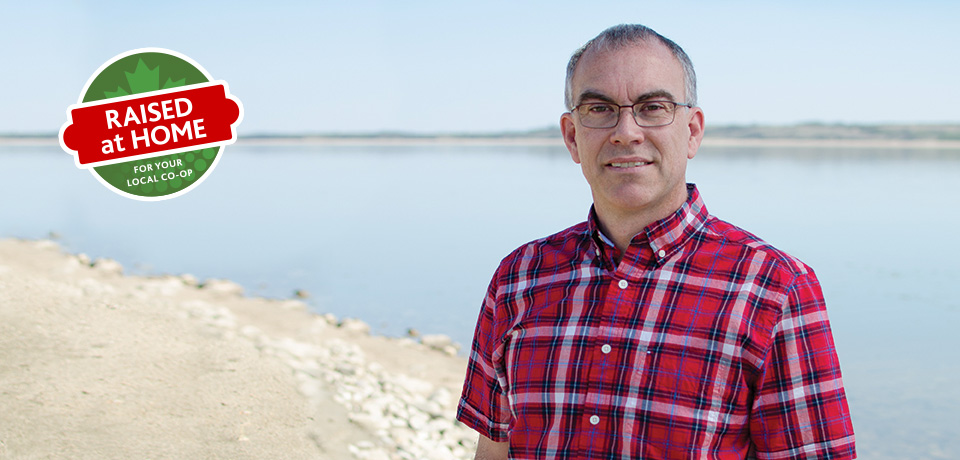In 1996, Dean Foss left his home in Newfoundland to start a 12-week work term at Wild West Steelhead, based at Lake Diefenbaker in Saskatchewan. What was meant to be a brief prairie sojourn to finalize his education ended up evolving into a fulfilling career. Twenty years later, he’s still working with the company — as the general manager — and still appreciating the sparkling lake vista just outside his office window.
Farm to table
“We’re a federally regulated aquaculture operation and we grow steelhead trout for the North American seafood market,” said Foss. “We control the entire process right from egg through to processing the final product. We have total control of the process and traceability of the product.”
It all starts with acquiring trout eggs from a supplier, and then incubating and hatching them. For the first six to eight months they grow in a tank facility on land (called a hatchery). Once the fish reach 20 grams, they’re moved from the hatchery to Wild West Steelhead’s growing cages in Lake Diefenbaker. From there, the fish are fed, graded and cared for for 18 to 24 months, until they reach their target harvest weight (between four and six pounds). At that point, the fish are harvested, processed and packaged on site and shipped throughout North America.
Foss said the advantage of having the hatchery, growing cages and processing plant all in one location “is that we can get fish from our farm, through our processing plant and on a truck within a matter of hours — so it’s very fresh.”
Local production meets local distribution with the new Co-op Gold Pure Lake Diefenbaker Trout, now available in participating Co-op Food Store freezers across Western Canada. While Wild West is the second largest freshwater trout producer in Canada.
Commitment to sustainability
While caring for the trout in Lake Diefenbaker, employees also care for the lake itself. Since opening their doors in 1992, Wild West Steelhead has regularly monitored the lake’s water quality and shared their data with both the provincial government and the Department of Fisheries and Oceans.
With the growing interest in local food, Foss explained that you don’t get much more local than choosing a fish that’s fed Saskatchewan-grown ingredients. “Their diet contains some canola meal and oil, as well as wheat protein,” he said, explaining that the canola and wheat are sourced from local farms.
The result is a nutritious fish that’s high in omega-3 fat. “It’s one of the healthiest proteins you’re going to eat,” said Foss.
“We have a 24-year history of producing a healthy product with negligible environmental impact.... It's an environmentally responsible industry.”

